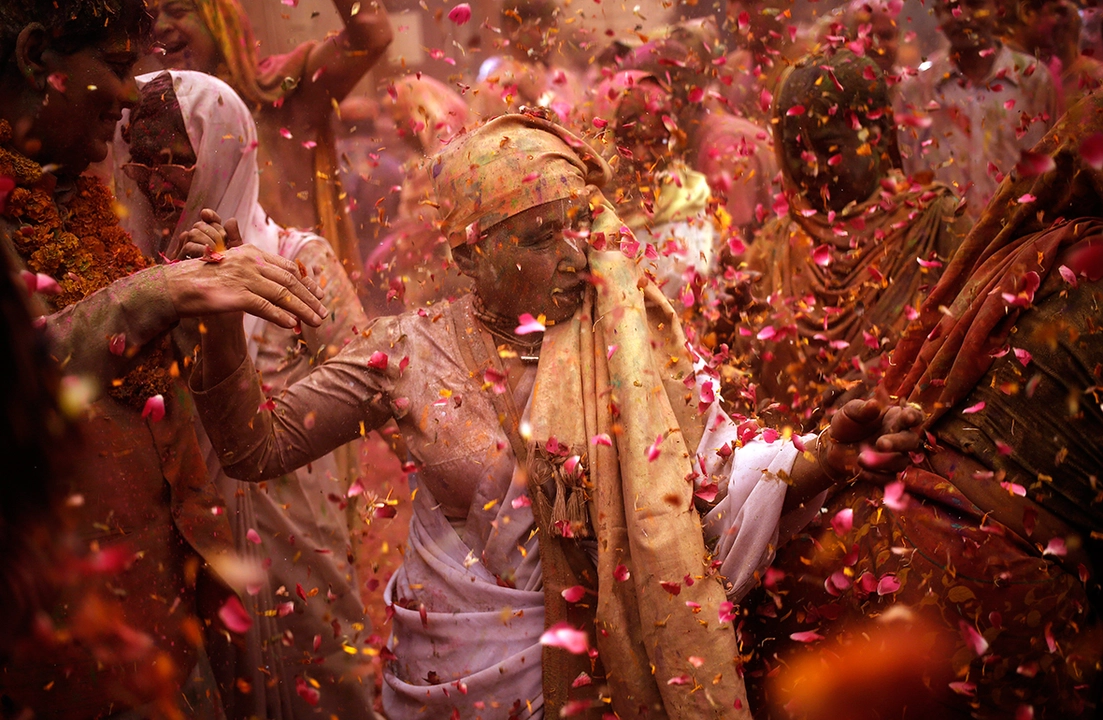Indian Culture and Traditions: Pride of Uttar Pradesh
Uttar Pradesh often shows what Indian culture and traditions look like up close. From the Taj Mahal to the crowded ghats of Varanasi, you can see history, religion, and daily life mixing in plain view.
Festivals matter here. Holi fills streets with color and loud laughter, Diwali lights homes, and religious fairs bring music and food that last for days.
If you like food, Uttar Pradesh delivers. Try Awadhi kebabs, rich biryani, sweet malaiyyo in winter, and street snacks like chaat and kachori at local stalls.
Music and dance are alive here. Kathak grew in Lucknow and Banaras still hosts classical concerts by day and devotional songs by the river at dawn.
Handicrafts tell stories too. Pick up delicate chikankari embroidery from Lucknow, brass toys, wooden dolls, or small carpets to bring home a piece of local craft.
Religion shapes daily routines. Mornings at Varanasi’s ghats show rituals, boat rides, and a steady flow of pilgrims and priests keeping old practices alive.
Language and literature matter. Hindi and Urdu mix in speech and songs. You’ll hear poets in cafés and old stories told in family gatherings.
What should you know before visiting? Dress modestly at temples and mosques, ask before taking photos of people, and try to visit early for calmer ghats and better light for photos.
Best times? Plan for festivals if you want color and crowds, or go in winter months for cooler weather and sweets like malaiyyo. Weekdays are quieter in cities.
Weddings show spectacular traditions. Expect long ceremonies, loud music, bright clothes, and food served to large groups. If you get an invite, say yes.
Uttar Pradesh also shaped politics and education in India. Many leaders and poets came from here, and old universities and madrasas kept learning alive for centuries.
Short practical tips: try a boat at dawn in Varanasi, taste kebabs in Lucknow, bargain gently at markets, and carry cash for small purchases.
Uttar Pradesh feels loud, deep, and welcoming at once. If you want to understand Indian culture and traditions, spending time here shows you how food, faith, arts, and everyday life fit together.
Museums and sites add context. The Lucknow Residency ruins explain colonial history, the Sarnath archaeological museum near Varanasi shows Buddha’s early teachings, and small local museums house folk items you won’t find online.
Getting around is simple but slow. Trains connect major cities, state buses reach small towns, and autos or taxis handle short trips. Allow extra time for travel, especially in festival seasons.
Safety and health: drink bottled water, avoid uncooked street salads if your stomach is sensitive, and keep emergency contacts handy. Locals are usually friendly and willing to guide you, so ask when you’re unsure.
Try learning a few Hindi phrases; a simple Namaste and Shukriya go far. Little gestures open doors and make conversations easier with shopkeepers, guides, and hosts.
Stay curious, eat local, and respect customs to get the most from your visit. Enjoy the journey.
India: What do people from Uttar Pradesh take pride in?
As a blogger, I am always fascinated by the diversity of cultures and traditions across India. One such region that has caught my attention is Uttar Pradesh. People from this state take immense pride in their rich history, which includes the architectural marvels such as the Taj Mahal and the ancient city of Varanasi. They are also known for their vibrant festivals, such as Holi and Diwali, and their delectable cuisine that has a perfect blend of flavors. Furthermore, the state's contribution to Indian classical music and dance forms like Kathak, cannot be overlooked, making it a cultural hub worth exploring.
learn more